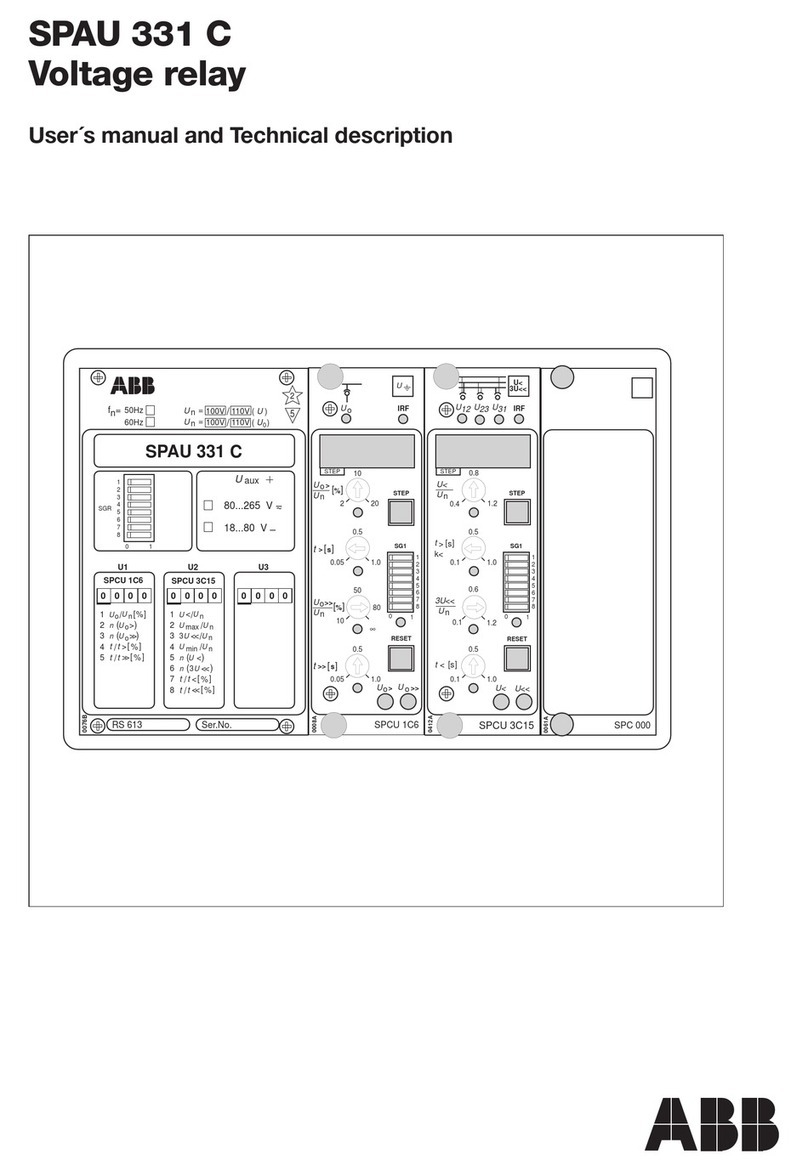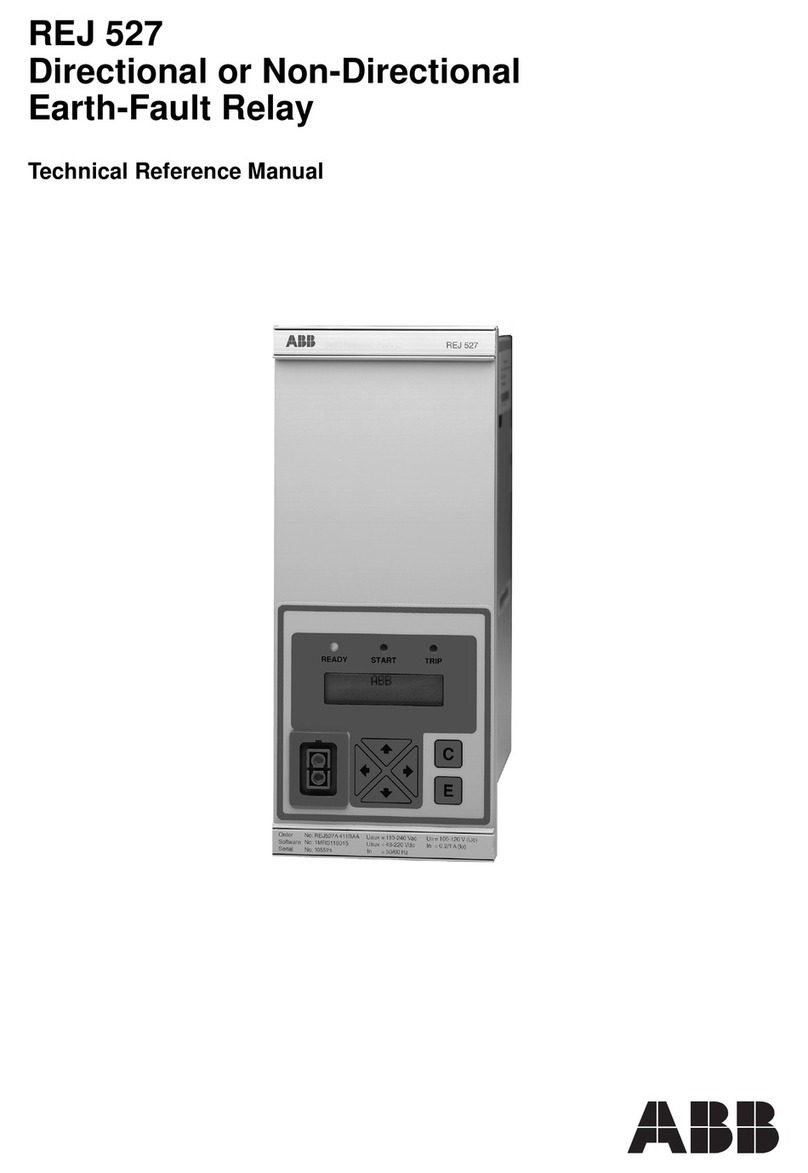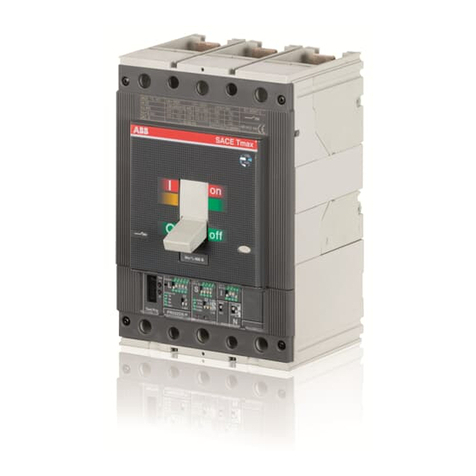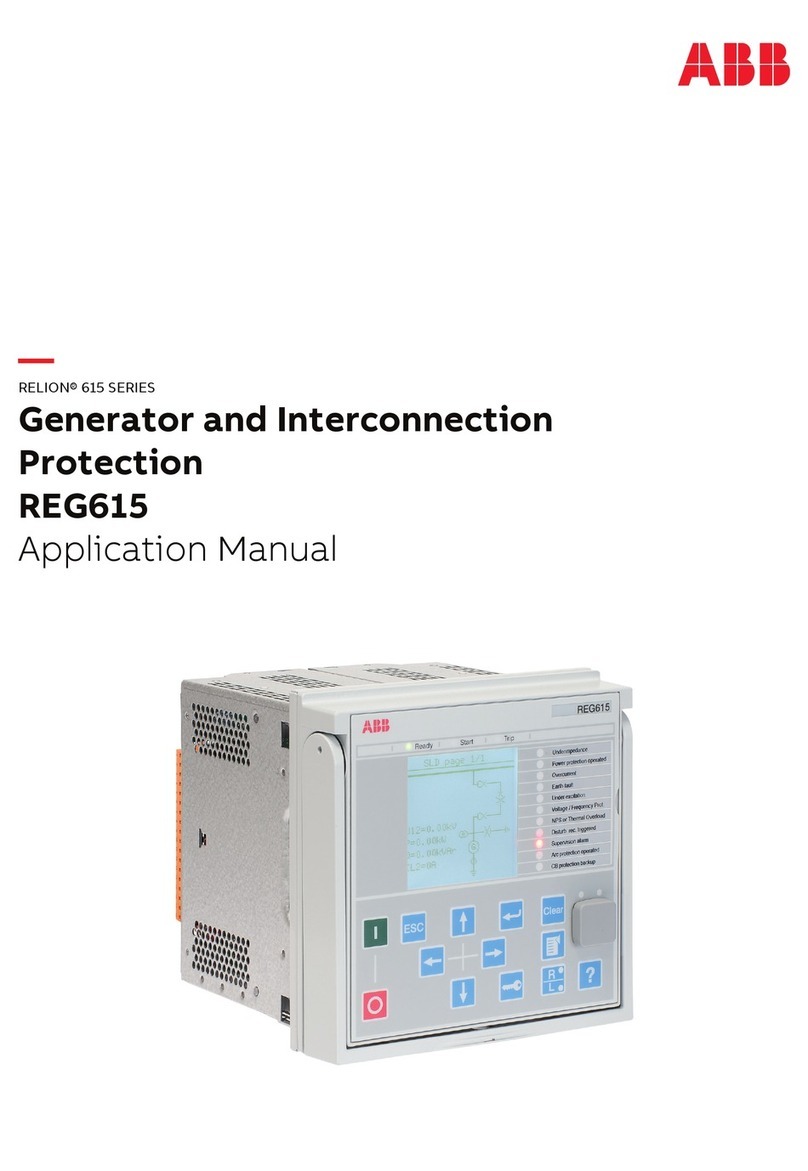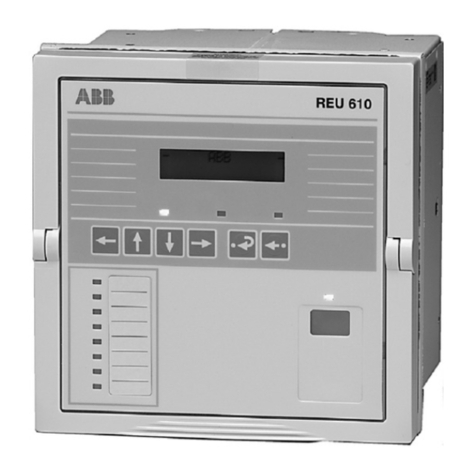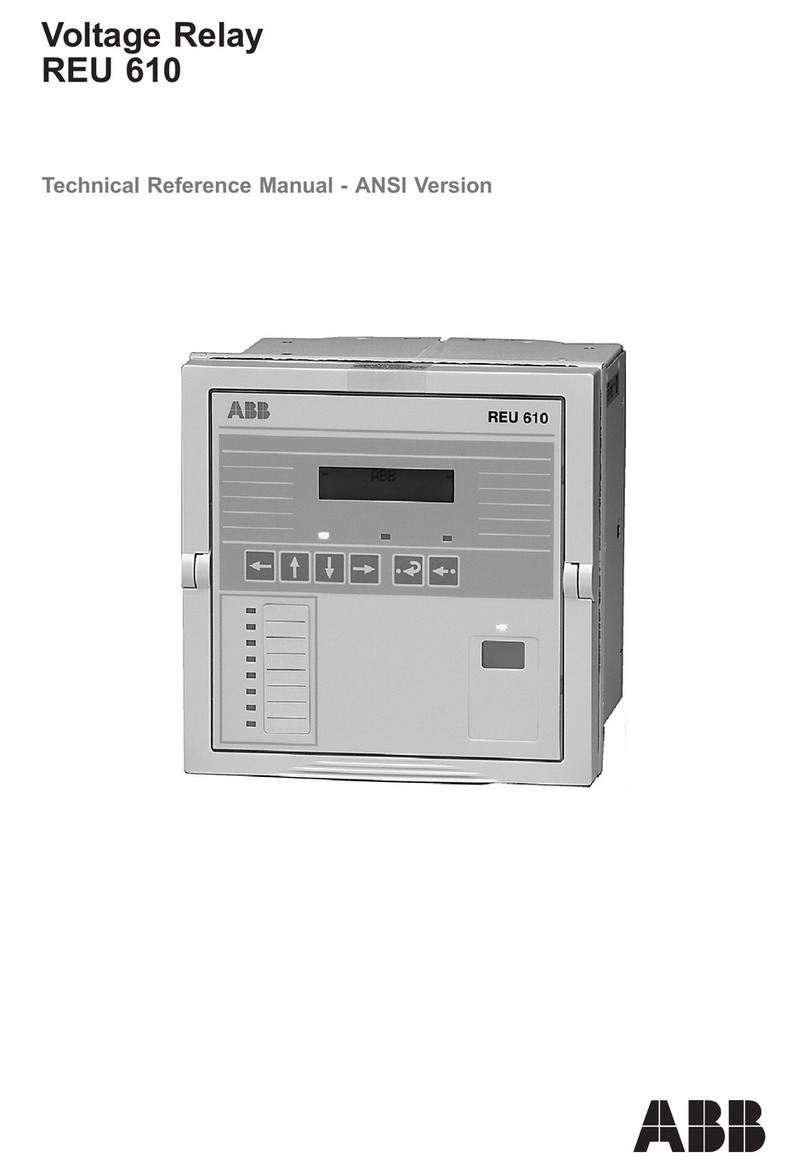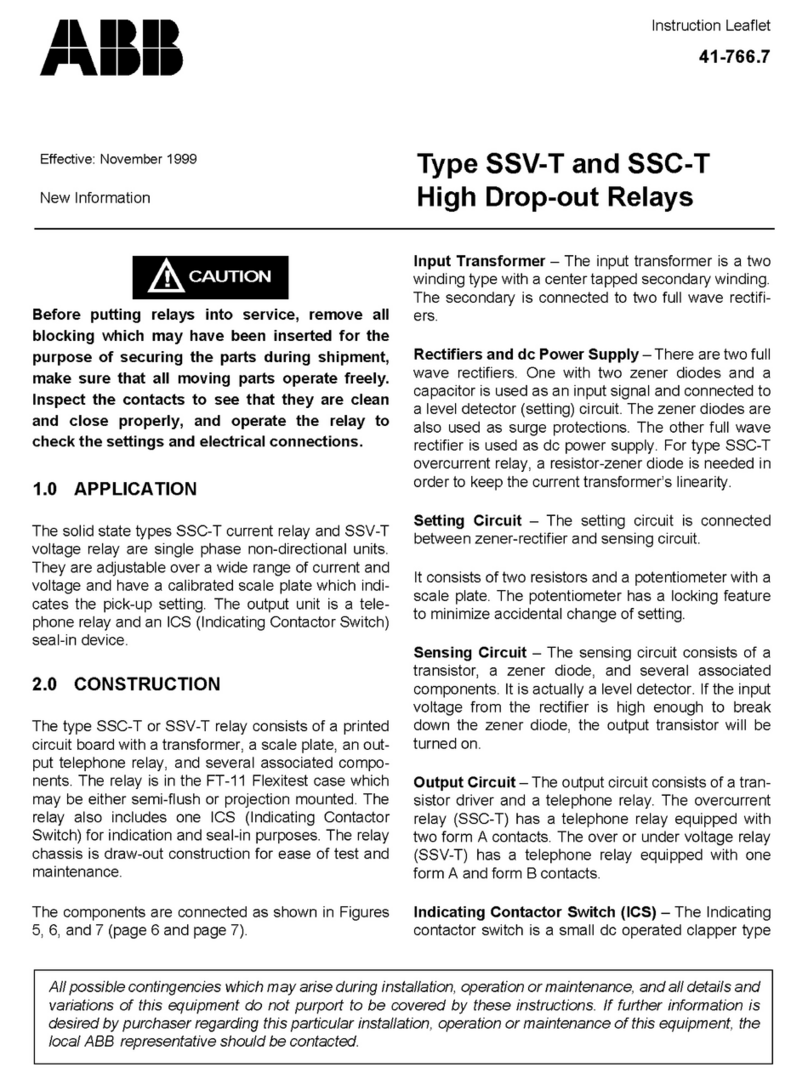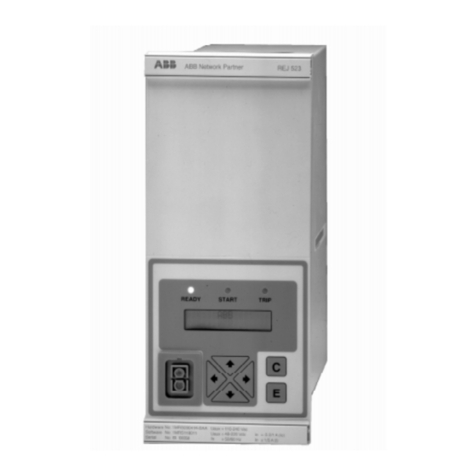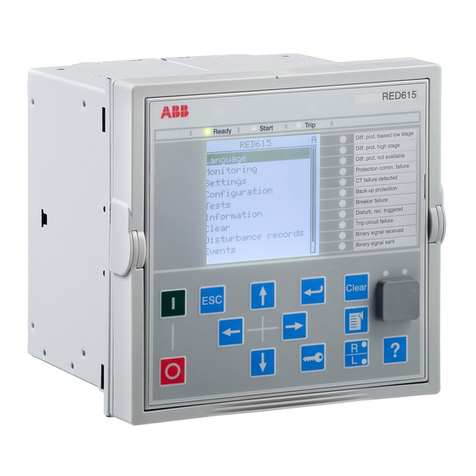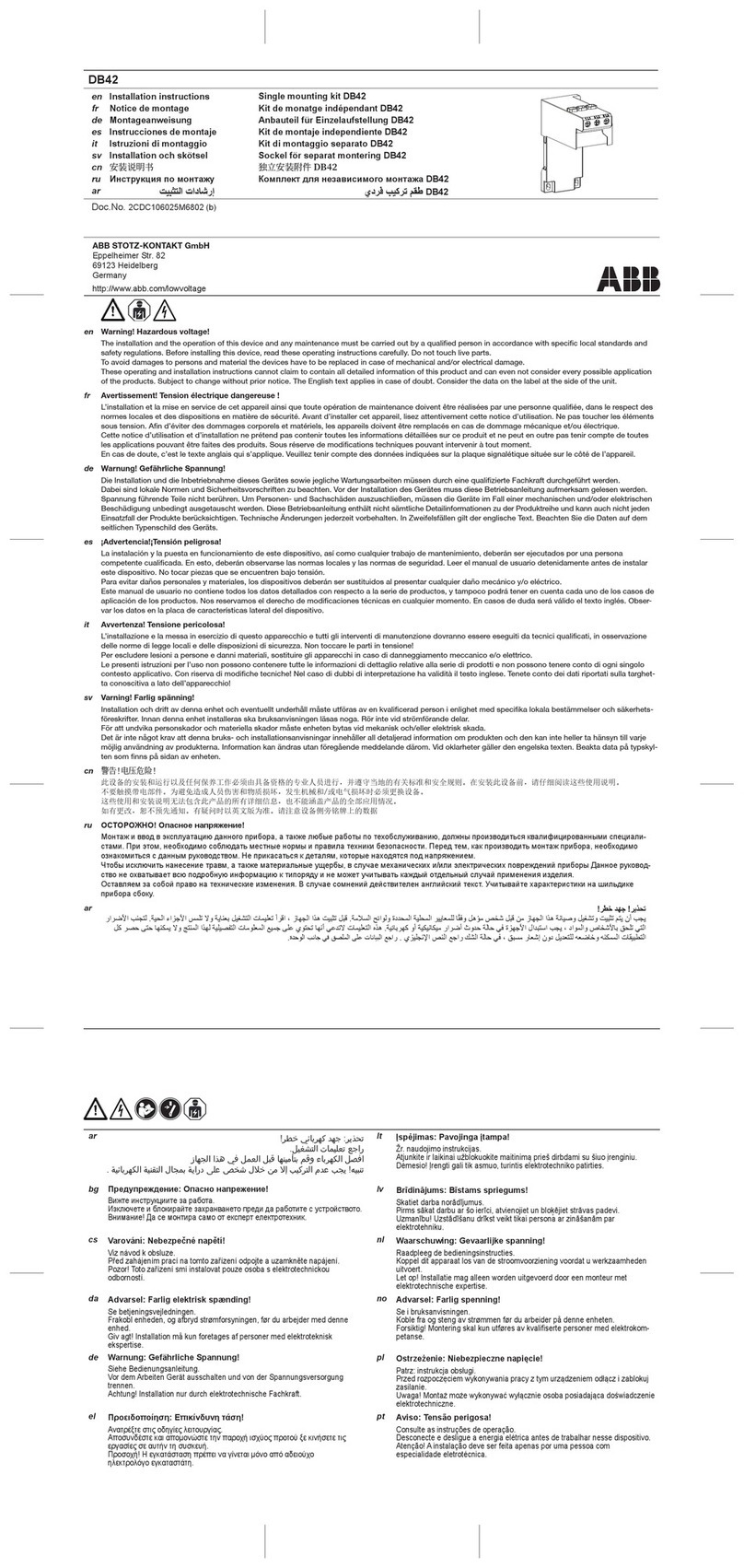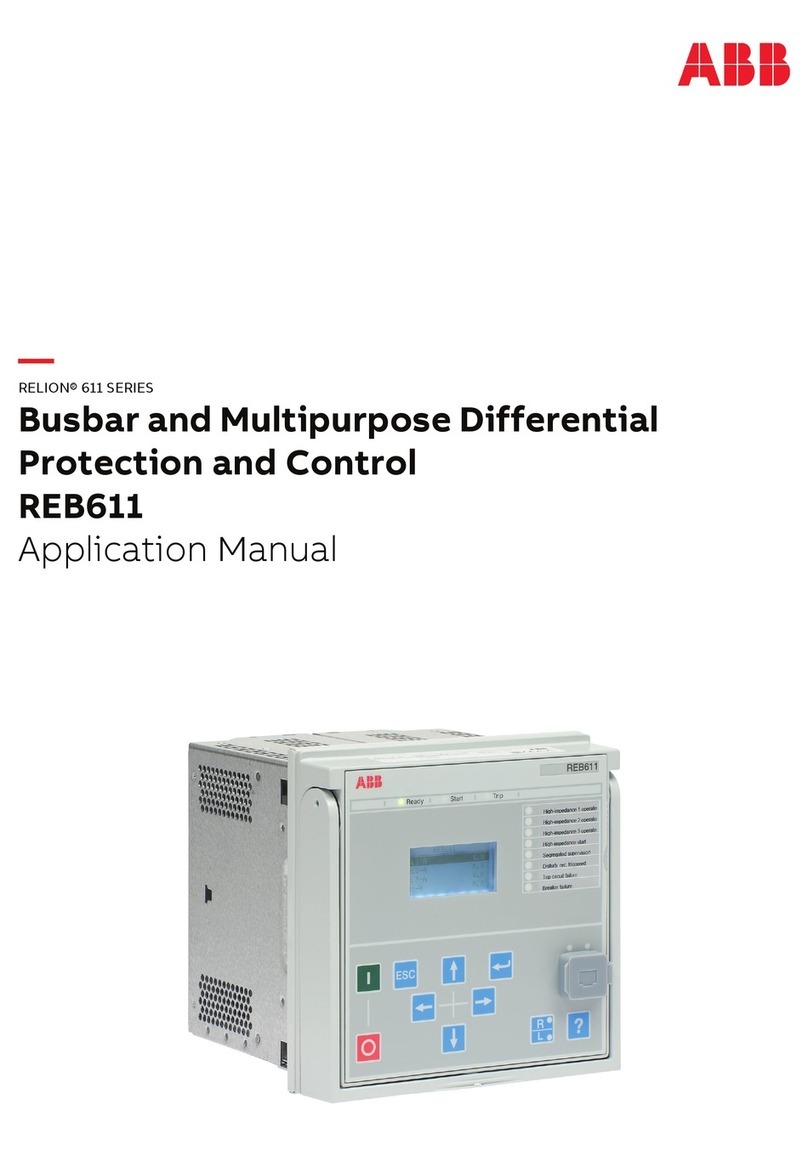
4
1MRS 755310
Feeder Protection Relay
Technical Reference Manual
REF 610
4.1.8. Indicator LEDs and operation indication messages .........64
4.1.9. Demand values ................................................................64
4.1.10.Commissioning tests ........................................................65
4.1.11.Disturbance recorder .......................................................65
4.1.11.1.Function .............................................................65
4.1.11.2.Disturbance recorder data .................................65
4.1.11.3.Control and indication of disturbance recorder
status .................................................................66
4.1.11.4.Triggering ..........................................................67
4.1.11.5.Settings and unloading ......................................67
4.1.11.6.Event code of the disturbance recorder .............67
4.1.12.Recorded data of the last events .....................................67
4.1.13.Communication ports .......................................................69
4.1.14.IEC 60870-5-103 remote communication protocol ..........70
4.1.15.Modbus remote communication protocol .........................74
4.1.15.1.Protocol overview ..............................................74
4.1.15.2.Profile of Modbus REF 610 ...............................75
4.1.16.DNP 3.0 remote communication protocol ........................88
4.1.16.1.Protocol overview ..............................................88
4.1.16.2.Protocol parameters of REF 610 .......................88
4.1.16.3.DNP 3.0 point list of REF 610 ............................88
4.1.16.4.DNP 3.0 device profile of REF 610 ....................92
4.1.16.5.REF 610-specific DNP features .........................99
4.1.17.SPA bus communication protocol parameters ...............102
4.1.17.1.Event codes .....................................................117
4.1.18.Self-supervision (IRF) system ........................................121
4.1.19.Relay parameterization ..................................................123
4.2. Design description ....................................................................123
4.2.1. Input/output connections ...............................................123
4.2.2. Light sensor input connections ......................................128
4.2.3. Serial communication connections ................................128
4.2.4. Technical data ...............................................................133
5. Application examples .......................................................... 138
5.1. Auto-reclose function ................................................................138
5.1.1. Fast tripping and initiation of shot 1 using two
protection stages ...........................................................138
5.1.2. Fast tripping and initiation of shot 1 using start signals .139
5.1.3. Selecting adaptive sequence length ..............................140
5.2. Arc protection ............................................................................141
5.2.1. Arc protection with one REF 610 relay ..........................141
5.2.2. Arc protection with several REF 610 relays ...................142
5.2.3. Arc protection with several REF 610 relays and one
REA 101 .........................................................................143



